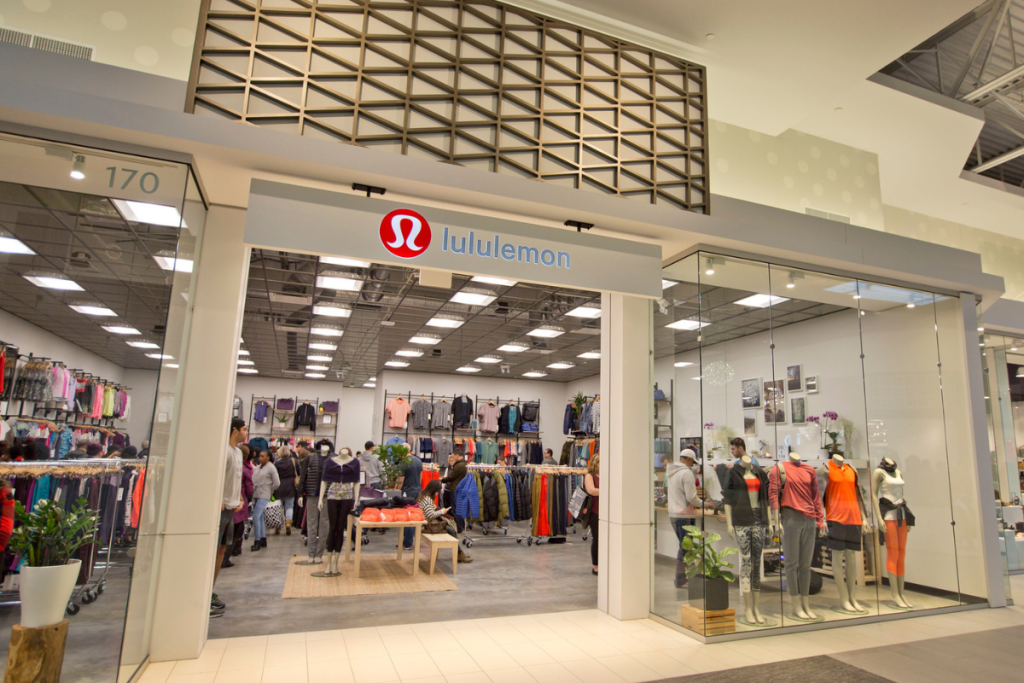Lululemon Athletica is struggling to keep up momentum as tariffs, shifting consumer tastes and intensifying competition weigh on its financial outlook. The premium athletic wear retailer expects second-quarter sales of $2.54 billion to $2.56 billion, falling short of Wall Street’s average projection. Profit forecasts for both the quarter and the full year have also been scaled back, highlighting ongoing struggles in key markets.
Tariffs Compound Consumer Caution
Shares of Lululemon dropped as much as 22% in premarket trading on June 6, marking the biggest one-day loss since March 2020. The stock has already fallen nearly 14% since the start of the year, amplifying investor anxiety over the brand’s ability to regain its footing.
Lululemon’s updated 2025 outlook factored in 30% tariffs on Chinese imports and 10% tariffs on other countries, as production hubs in Asia face persistent trade headwinds. The company has signaled that it will raise some prices to offset these higher costs, though chief financial officer Meghan Frank assured investors that the increases will be “modest in nature” and focused on select items.
The broader environment is also proving difficult. With inflation cutting into household budgets and promotions from competitors like Nike and Under Armour luring away price-conscious shoppers, Lululemon’s signature $100 leggings are facing headwinds. CEO Calvin McDonald acknowledged on the earnings call that U.S. consumers are “very intentional” with spending, a caution that’s limiting sales even as the brand diversifies its product lines.
Balancing New Products with Evolving Trends
The company is expanding into fresh categories like running, tennis and golf apparel to capture new audiences, but these efforts are meeting resistance from broader fashion shifts. More consumers are opting for looser fits and casual leisurewear, a trend that challenges Lululemon’s traditional reliance on body-hugging yoga pants.
New product launches, including high-rise trousers and performance shorts, have received positive initial feedback, according to Bloomberg Intelligence analyst Poonam Goyal. However, weak store traffic and lingering tariff concerns are dampening the impact of these new lines. “The silver lining is that the newness is being well received,” Goyal said in an official statement. “But tariff and consumer uncertainty is masking it.”
A Lesson from Fast-Fashion Competitors
While Lululemon recalibrates its approach, rival brands like Shein and Uniqlo are capitalizing on consumers’ demand for affordability and adaptability. These fast-fashion players have leveraged digital-first retail strategies and lean production to keep pace with rapidly changing preferences, offering lower-priced alternatives that resonate with price-sensitive shoppers. For Lululemon, the challenge is to align premium positioning with an environment that increasingly prizes flexibility over brand loyalty.
Rethinking Loyalty in a Fast-Changing Market
The company’s current challenges are a reminder that loyalty in retail is never guaranteed, it’s earned and re-earned with every product launch and pricing decision. Companies that thrive today are those that balance brand equity with a pragmatic approach to evolving tastes and tighter household budgets. Lululemon’s next steps will shape whether it can pivot from a niche athletic brand to a truly mainstream competitor, without losing the loyal following that built its name.








